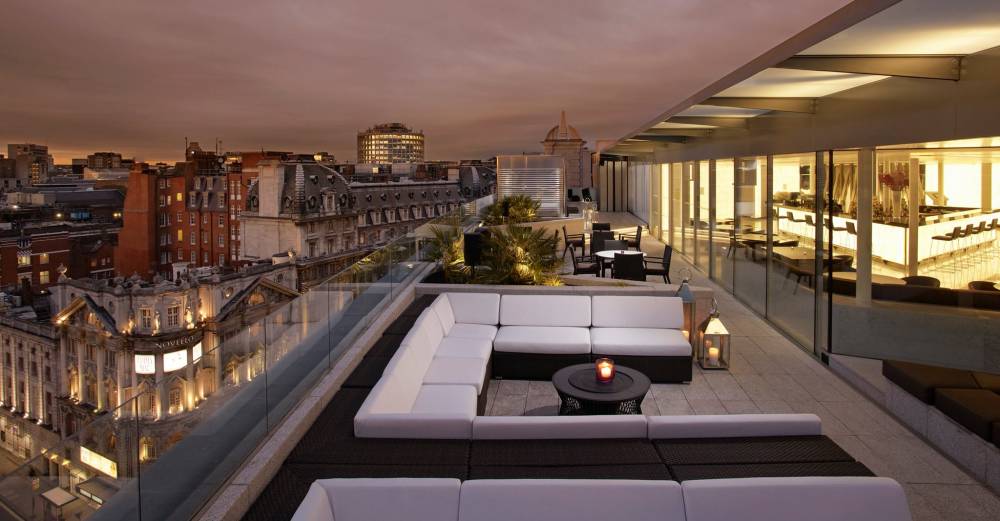
Vincent van Gogh
Café Table with Absinthe, 1887
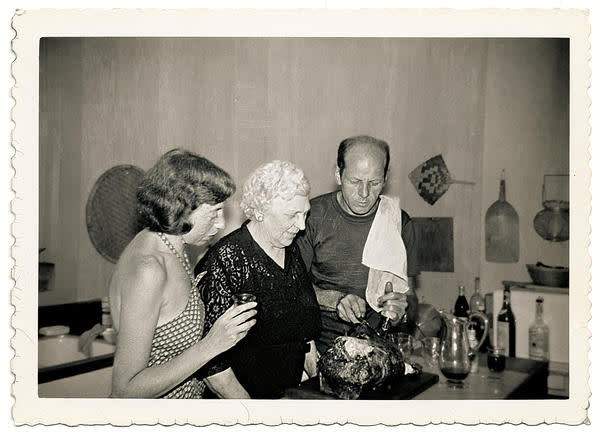
Jackson Pollock, Lee Krasner and his mother, Stella Pollock
East Hampton, New York, 1950
What is the relationship between art and alcohol? Sparkling wine is a fixture of any gallery opening, where women wear appropriately-named cocktail dresses. Alcohol has existed, it seems, from the dawn of time, found in the Ancient civilizations of China, Egypt, Greece, and Mesopotamia. It is featured heavily in texts from The Iliad and The Odyssey to Beowulf and Shakespeare. Alcohol is a fixture of humanity, a cultural marker, and a great equalizer. It is also symbolic; a summation of human progress, representing the evolution of farming, agriculture, fermentation, and even pottery—a clay vessel being necessary for the early fermentation process. The idolized existence of the tortured artist—as the story goes—is made bearable by the presence of alcohol. It is also, unfortunately, the downfall of great artists of all mediums, from Pablo Picasso and Jackson Pollock to F. Scott Fitzgerald and Billie Holiday. The relationship between alcohol and the artist is often tumultuous, co-dependent, and contradictory. At the same time, alcohol is used in various celebrations of life: religious ceremonies, communal gatherings, weddings, and holidays. In examining the presence of alcohol in various forms of art, we can better understand the relationship between the two.
The attitude toward alcohol varies greatly throughout different artists and periods. Edgar Degas’ 1875 painting “L’Absinthe,” takes an oppositional attitude to drinking through highlighting the dangers of absinthe. In the painting, a man and woman sit in a café staring into space, a glass of absinthe between them. The mood is desolate, made apparent by the couple’s expressions and the gray atmosphere of the painting. Édouard Manet’s last major work, “A Bar at the Folies-Bergère,” painted in 1882, similarly examines the conflicting nature of alcohol. The work contrasts a lively atmosphere with the detached barmaid, her reflection in the mirror behind shifted unsettlingly far to the right, revealing a customer directly in front of the barmaid, seemingly standing where the viewer would be. The painting is fascinating and disconcerting, particularly because of the reflection. It makes viewers uneasy, perhaps intentionally so.
Edgar Degas
The Absinthe Drinker, 1875-1876
Édouard Manet
A Bar at the Folies-Bergère, 1882
By contrast, Renoir’s “Luncheon of the Boating Party,” finished just a year earlier, depicts alcohol as a staple of the relaxed, communal atmosphere of 19th century France. One of Renoir’s most popular works, the joyous attitude that the painting exudes can largely be attributed to the connection between the characters. Unlike the previous two paintings, in which the central figures are somber and detached from their surroundings, the figures in “Luncheon of the Boating Party” seem to be in genuine conversation with one another. Perhaps this is due to Renoir’s connection with the subjects: the model in the lower left corner became the artist’s wife, and the painting incorporates a number of Renoir’s friends, including art collector Charles Ephrussi. The composition’s skillful balance, along with upbeat details like the small dog in the bottom left corner, make for a celebratory depiction of social day drinking.
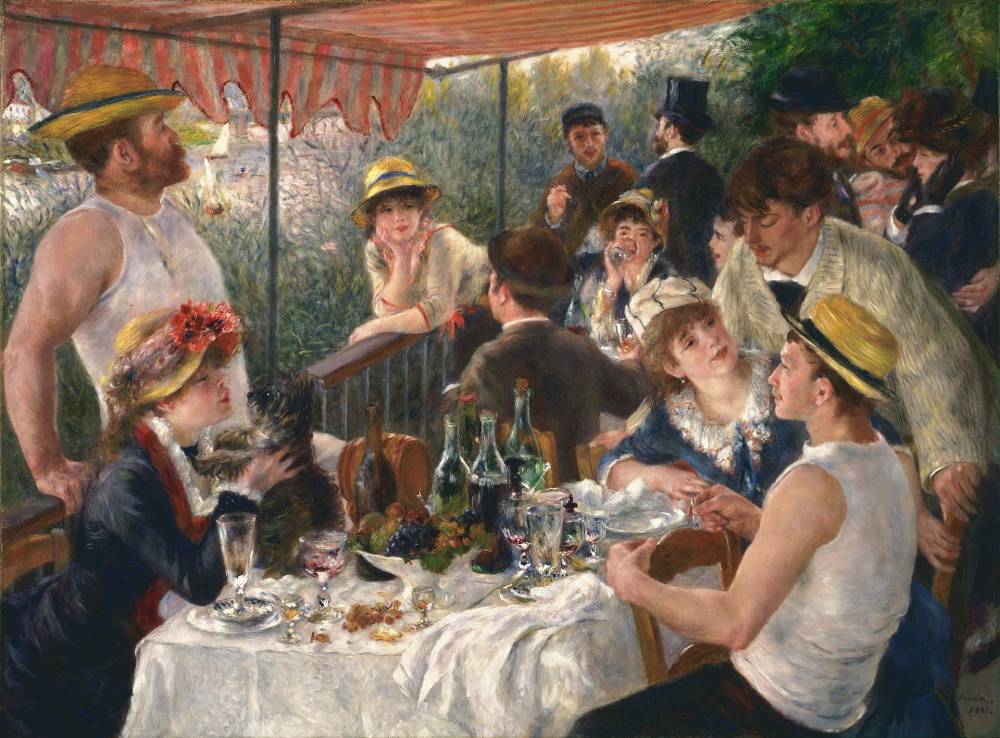
Pierre-Auguste Renoir
Luncheon of the Boating Party, 1881
No stranger to alcohol himself, Pablo Picasso painted two notable works centered around absinthe: “The Absinthe Drinker” from 1901, and the 1903 work “Portrait of Angel Fernandez de Soto”. While both paintings are more ambiguous in their attitude toward alcohol, “The Absinthe Drinker” appears to take on elements of absinthe’s hallucinatory properties. In it, the central figure is distorted, her hand abnormally large and seeming to embrace herself. While the painting exudes a sense of loneliness and despair, its exaggerated proportions, flat style, and contrasting colors heighten the work’s drama in ways that the works by Degas and Manet did not. The Portrait of Angel Fernandez de Soto, painted in Picasso’s Blue Period, depicts a friend and fellow artist after a night of partying, smoking a tobacco pipe with a glass of absinthe in front of him. Again, Picasso adds a level of drama to his works, here evoked in the blue tones, the figure’s sunken, hollow face, and the clouds of smoke framing his head.
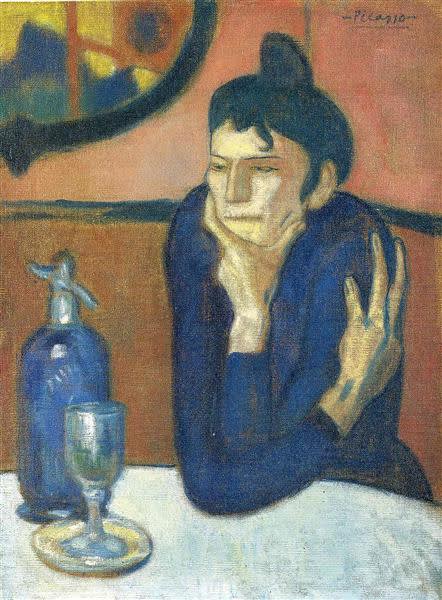
Pablo Picasso
The Absinthe Drinker, 1901
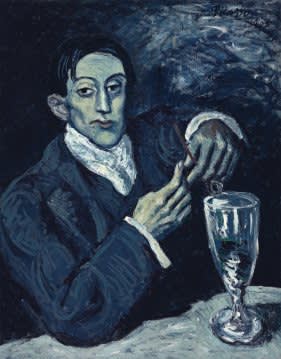
Pablo Picasso
Portrait of Angel Fernandez de Soto, 1903
One of the most famous works of 20th century American art, Edward Hopper’s “Nighthawks,” painted in 1942, depicts three characters seated at a bar, with a bartender serving them. The painting can be interpreted as a portrayal of human loneliness, particularly in an urban setting, due to the characters’ lack of connection or communication. Still, the painting has a universal and ethereal quality that prevents it from being pigeonholed into one interpretation. The presence of alcohol seems to be neither a help nor hindrance to the characters’ isolation, though one might argue that it is the factor that brought them together so late at night, for better or for worse.
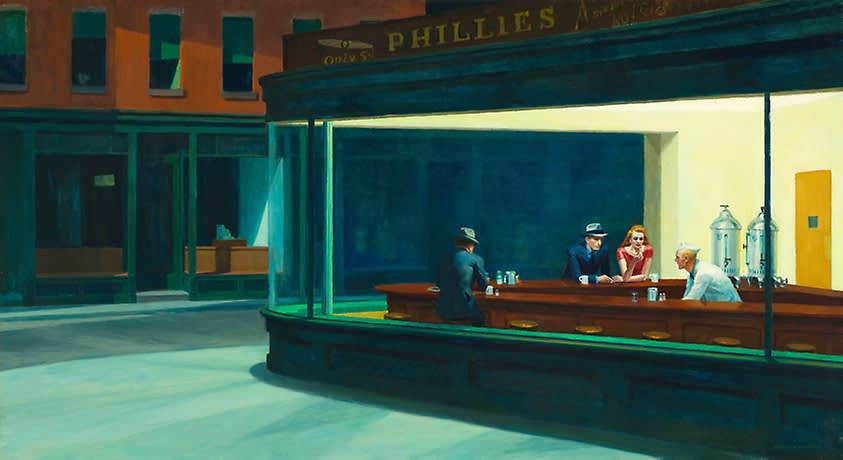
Edward Hopper
Nighthawks, 1942
In recent years, the development of contemporary art and, in particular, pop art, have drawn artists to more and more commercial pursuits. In the time since Ancient civilizations first developed alcohol, it, too has become commercialized, and much earlier than art itself. By around 200 BC, the Roman Empire had an extensive network for trading and shipping wine, amongst other goods. Today, we have a wide range of collaborations between artists and alcohol companies, effectively capitalizing on art and alcohol’s mutual fascination. For a 1986 ad campaign, Absolut Vodka collaborated with the king of Pop Art, Andy Warhol, for a soon-to-be infamous ad, beginning a partnership between Absolut and the art world. In recent years, Absolut worked with the Warhol Foundation to recreate the bottle featured in the artist’s original advertisements. Continuing Absolut’s collaborations, Keith Haring designed an ad for the vodka brand in his own playful style, while in 2013, Jeff Koons collaborated with Dom Pérignon on limited edition bottles and boxes for a vintage 2003 rosé. In addition, the artist created a miniature “Balloon Venus” for the champagne company’s launch.
Andy Warhol
Absolut Vodka, 1985
Andy Warhol
Absolut Vodka, Warhol Edition Bottle, 1985
Keith Haring
Absolut Vodka, Advertisement, 1980s
Jeff Koons
Dom Pérignon, Miniature Balloon Venus and Bottle, 2013
Jeff Koons
Dom Pérignon, Miniature Balloon Venus Bottle and Packaging 2013
In the 1980s, Jeff Koons created his “Luxury and Degradation” series, in which he appropriated liquor ads for a variety of companies and printed them on canvas, demonstrating his fascination with material and transformation. These works present an interesting question: are advertisements art? At the very least, they are worthy examples of design achievement. Various alcohol ads, especially vintage ones, have distinct styles that draw in customers. Budweiser frequently used couples to sell their beer as patriotic, ‘All-American,’ and family oriented. By contrast, vintage advertisements for Fernet-Branca exuded a sense of strange mystery, while Absinthe used art deco style graphics to celebrate the time of its popularity, as well as incorporating strange imagery alluding to the supposed effects of the “Green Fairy”.
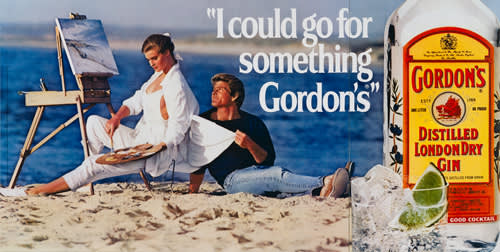
Jeff Koons
I Could Go For Something Gordon's, 1986
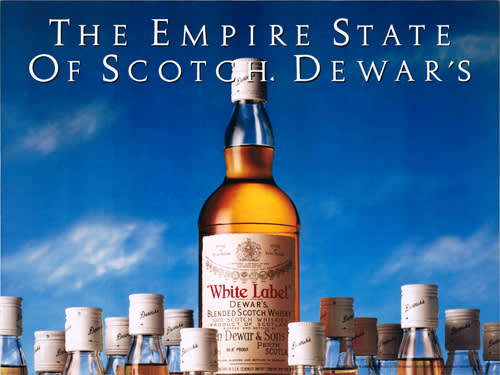
Jeff Koons
The Empire State of Scotch, Dewar's 1986
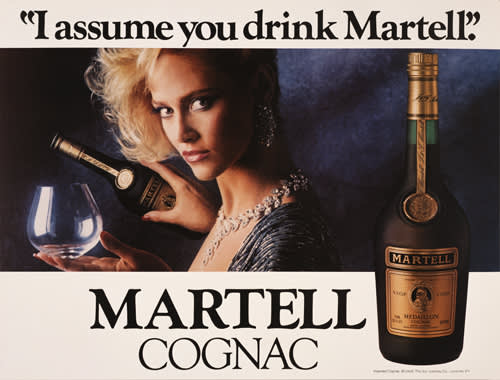
Jeff Koons
I Assume You Drink Martell, 1986
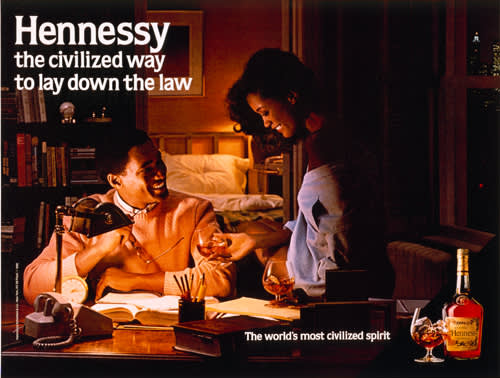
Jeff Koons
Hennessy, The Civilized Way to Lay Down the Law, 1986

Jeff Koons
Come Through with Taste - Myers's Dark Rum - Quote Newsweek, 1986
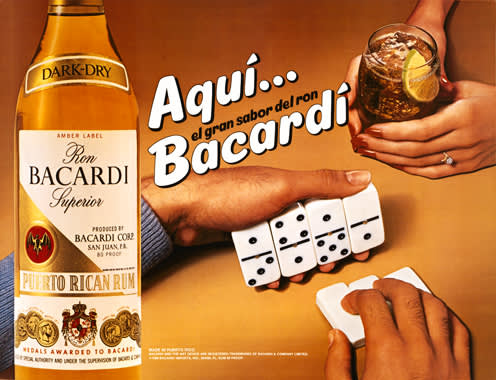
Jeff Koons
Aqui Bacardi, 1986

Budweiser
Advertisement, 1950s
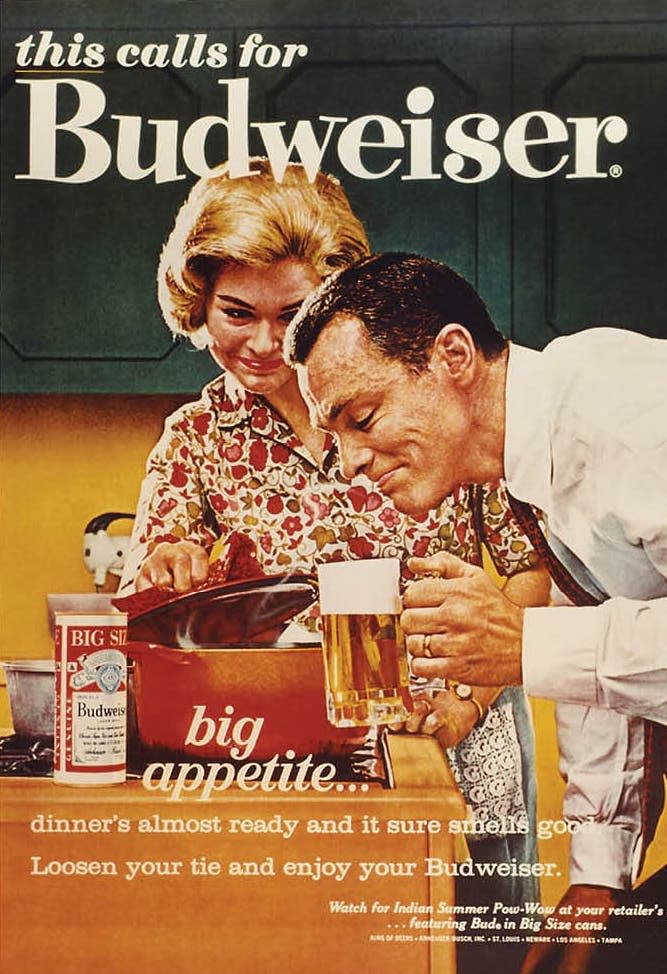
Budweiser
Advertisement, 1950s
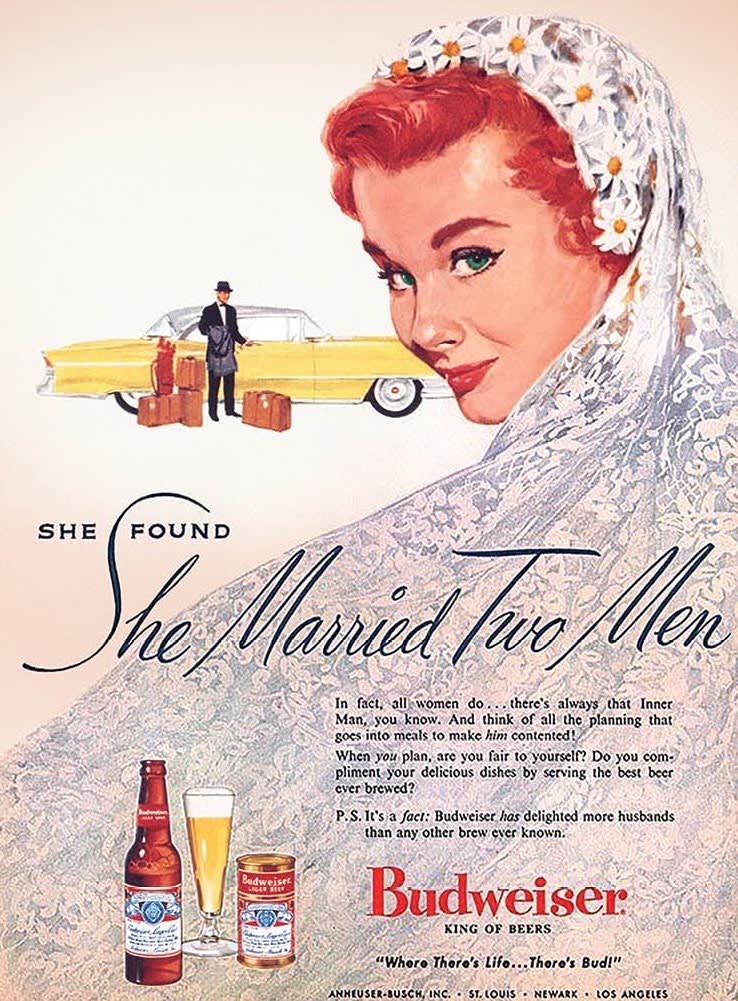
Budweiser
Advertisement, 1950s
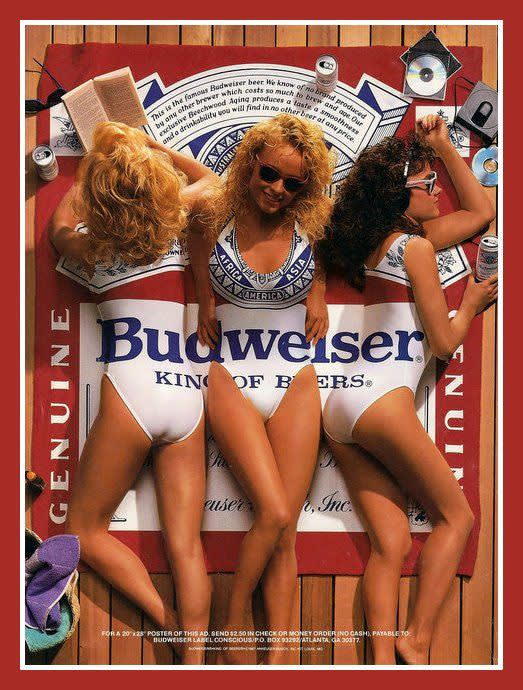
Budweiser
Advertisement, 1988
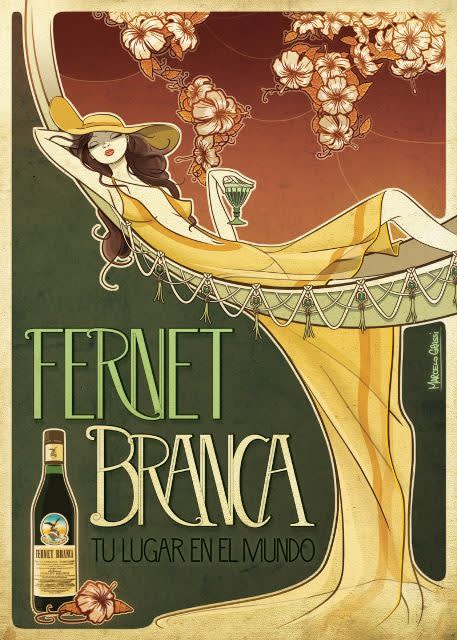
Fernet Branca
Advertisement, 1920s
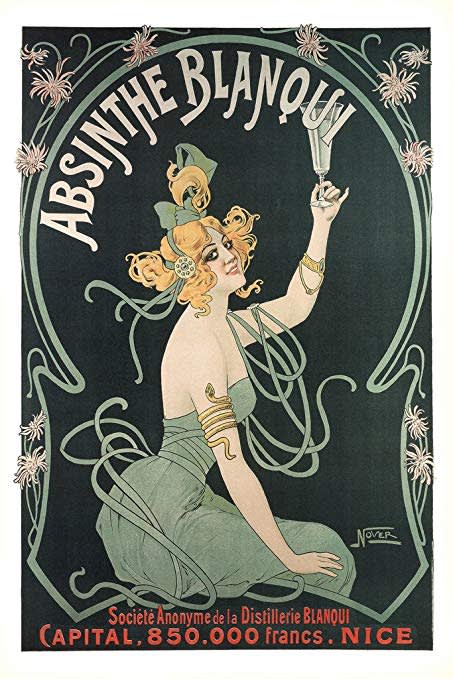
Absinthe Advertisement
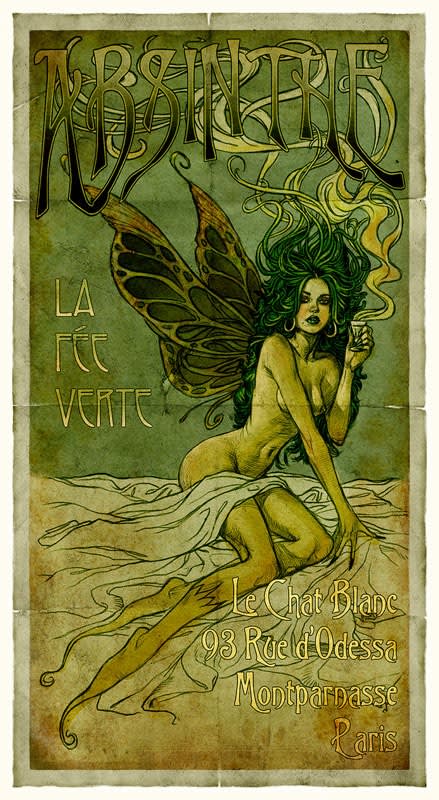
Absinthe Advertisement
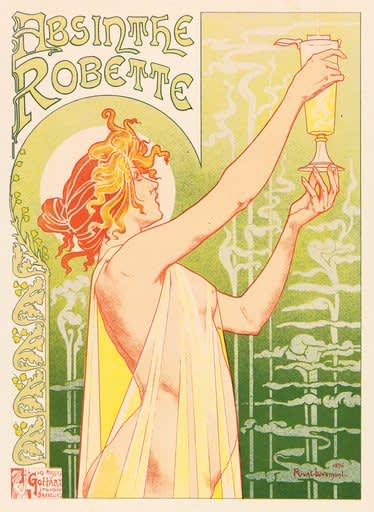
Absinthe Advertisement
In addition to bottle designs and advertisements, the wide variety of accoutrements that accompany alcohol — the mixing of cocktails, display of bottles, even the bars themselves — have all gone through innumerable design iterations. In 1991, American furniture designer Dakota Jackson created a customized “Saturn Stool” for Absolut vodka, continuing the company’s commitment to artist collaborations. The bar cart, which gained popularity in the 1950s, is an iconic object that has been steadily re-interpreted for over 100 years. Featured in movies such as the 1937 Carey Grant film The Awful Truth, Marilyn Monroe’s 1955 classic The Seven-Year Itch, and Rosalind Russell’s 1958 film Auntie Mame, the bar cart is a symbol of wealth and elegance in the home. Shiro Kuramata’s 1968 design is sleek and simple, made of iron tubes in matte black with white laminate shelves, while Javier Mariscal’s 1981 ‘Hilton Trolly’ employs leaning supports and primary colors to create a fun and playful take on the classic design, perhaps a pushback to the object’s assumed elitism, and Yabu Pushelberg’s ‘Gin Lane’ bar cart balances minimalist restraint with opulence.
Dakota Jackson
Absolut, Saturn Stool, 1991
Shiro Kuramata
Trolley Bar Cart, 1968
Javier Mariscal
Hilton Trolly, Bar Cart, 1981
Yabu Pushelberg
Gin Lane, Bar Cart, 2016
Much like art, the world of fashion is deeply tied to consumerism. While in contrast, fashion is a part of our everyday lives through dress, making it a contributing factor in social gatherings that revolve around drinking. Fashion and alcohol are both luxury items used to show off one’s class and wealth, fostering a deep-rooted connection between the two, one example of this being the Cocktail Dress.
Following the mass influx of women in the work force during World War I, the idea of the modern woman — a woman who could work, shop, and occupy public space without her husband present — was on the rise. This newly afforded freedom was compatible with alcohol, a freeing substance on its own. Soon the cocktail party became a popular social event in America, in which friends would gather in semi-formal wear in the late afternoon for cocktails and conversation. Typically, the cocktail dress had a shorter hemline than that of the evening gown, further showing the dissolution of strict standards for women, and was paired with costume jewelry such as cocktail rings. The cocktail ring, must like the cocktail dress, has roots in women’s liberation, especially during the Prohibition era of the 1920s, and was designed to be a conversation-starter, often including large, boldly colored gemstones. The French took the key elements of the cocktail dress — women’s freedom and semi-formalwear — and incorporated them into a new “fancy-dress” style. Paul Poiret, in particular, is noted for his “Harem skirt,” which was shocking, exotic, and representative of a new age and a new woman, the perfect design for any cocktail party or social gathering.
Paul Poiret
Harem Trousers, 1910s
Paul Poiret
Harem Trousers, 1910s
Paul Poiret
Harem Skirt Cocktail Dress, 1910s
Charles James
Cocktail Dress, 1950s
Dior
Cocktail Dress, Spring/Summer 1956
Dior
Cocktail Dress, Fall/Winter 1956
Valentino
Cocktail Dress, 1969
Modern designers, much like contemporary artists, have taken to collaborating with alcohol brands for various accessories related to drinking. In 1998, Louis Vuitton worked with Dom Perignon to create a limited-edition bottle holder made of leather with brass hardware and a strap for carrying. The bag illuminates Louis Vuitton’s iconic heritage in leather goods while incorporating Dom Perignon in a non-flashy manner. Similarly, American designer Brandon Maxwell created a chic Champagne bag made of acrylic and finished with a brass handle for his spring/summer 2019 runway collection. Italian fashion house Dolce & Gabanna worked with Martini spirits to create a collectible gold bottle with the fashion brand’s logo, while in 2018, Off-White designer Virgil Abloh collaborated with Moet Rosé for a limited edition bottle. The design features Abloh’s trademark sans serif typeface with quotation marks, reading, “DO NOT DROP.”
Other designers have sought to incorporate alcohol as a motif in their work; the martini being a perfect subject due to its instantly recognizable, iconic shaped glass. One such example is a cheeky hand-painted martini T-shirt by Fendi, while another is Prada’s martini clutch, made from gorgeous leather and finished playfully with a martini decal. Much like Renoir’s “Luncheon of the Boating Party,” albeit in a modern, more commercial way, these pieces uphold alcohol’s long tradition as a staple of community and celebration.
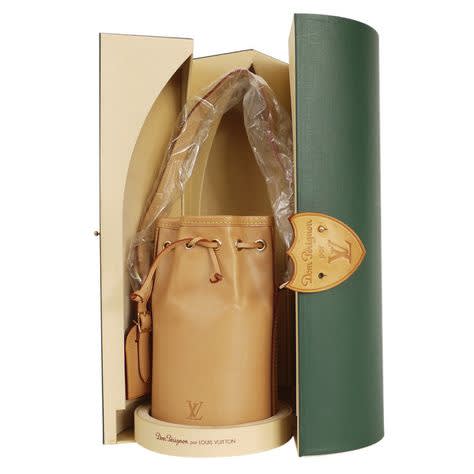
Louis Vuitton
Dom Perignon, 1998
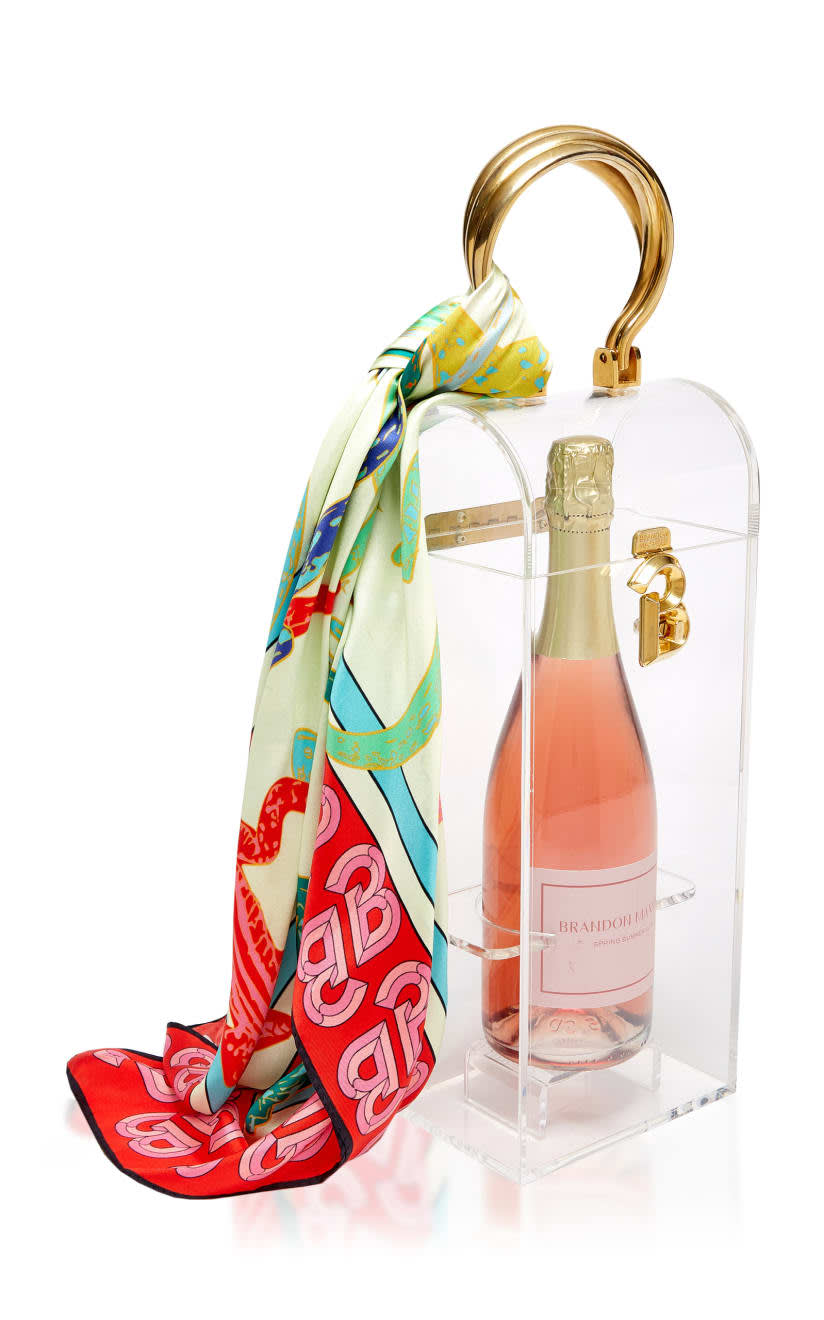
Brandon Maxwell
Acrylic Champaign Carrier, Spring/Summer 2019
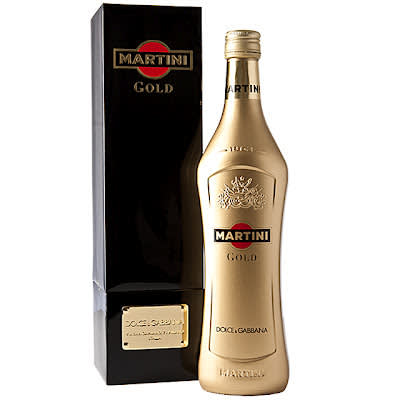
Dolce & Gabbana
Martini Gold
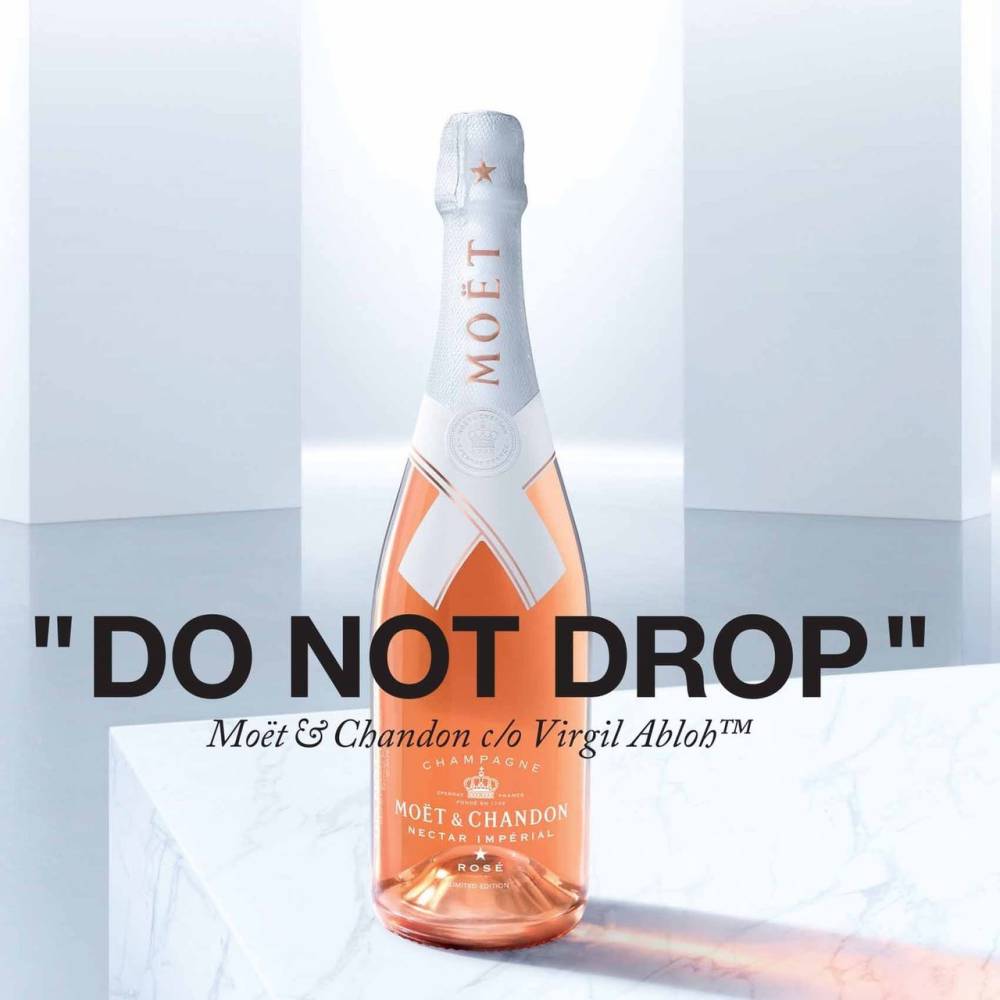
Virgil Abloh
Moet, Rosé Champagne, 2018
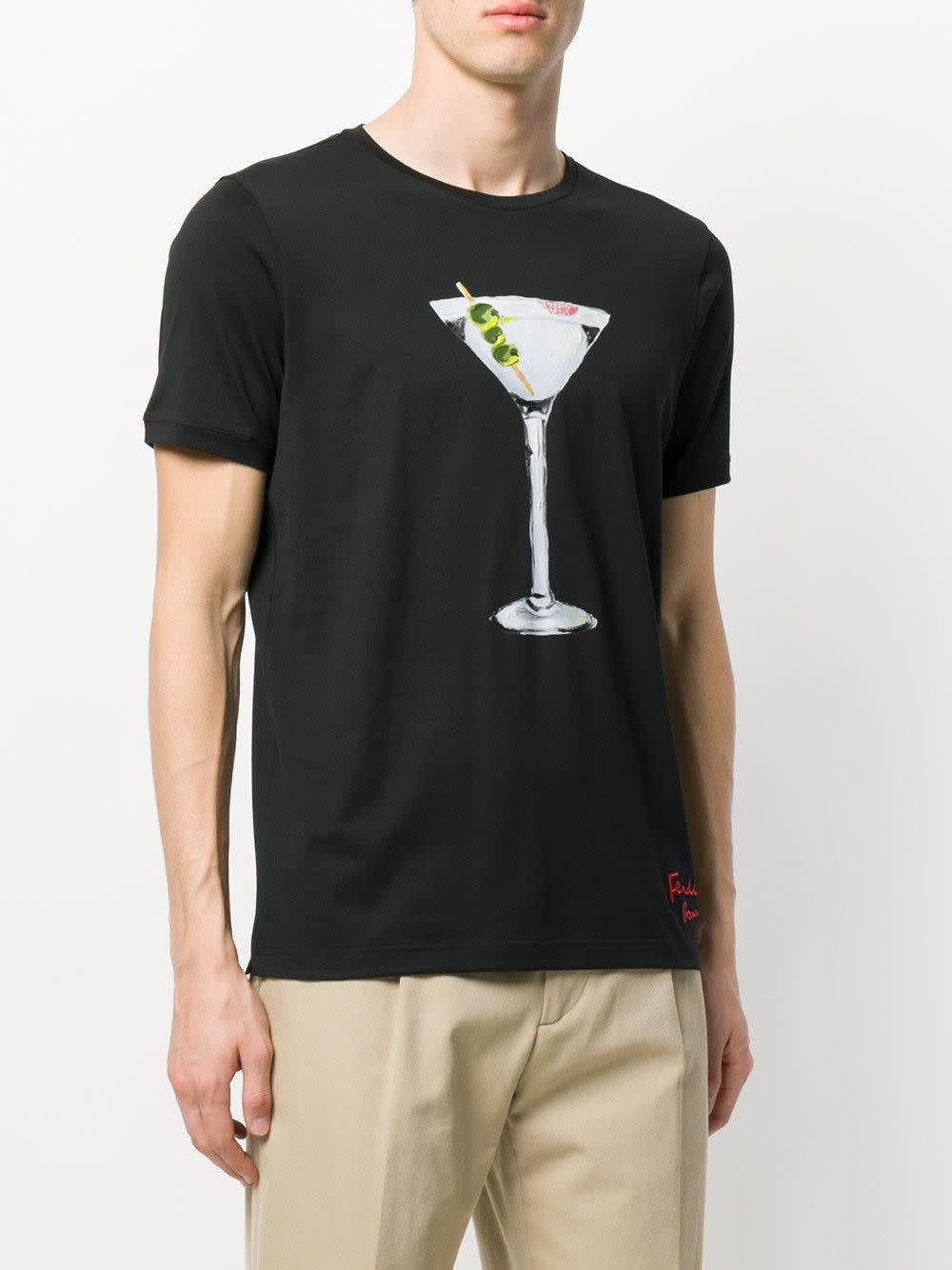
Fendi
Black Martini Printed T-shirt
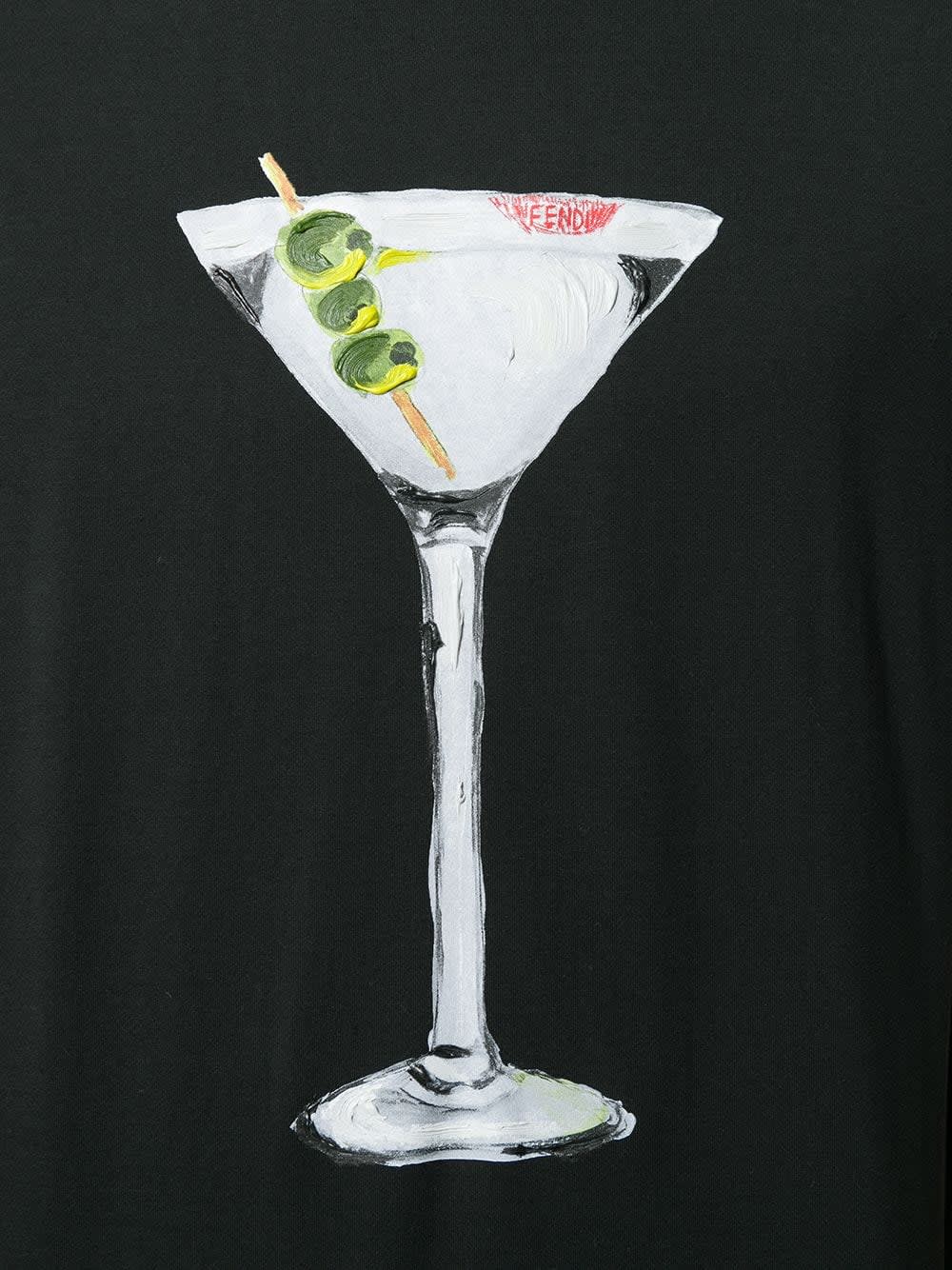
Fendi
Black Martini Printed T-shirt
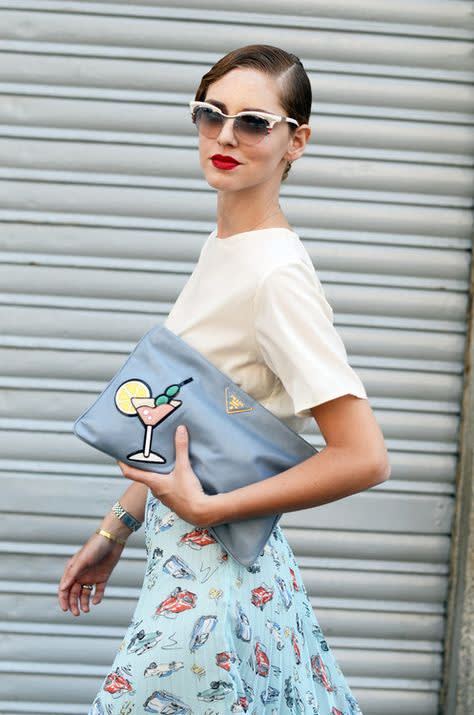
Prada
Martini Clutch
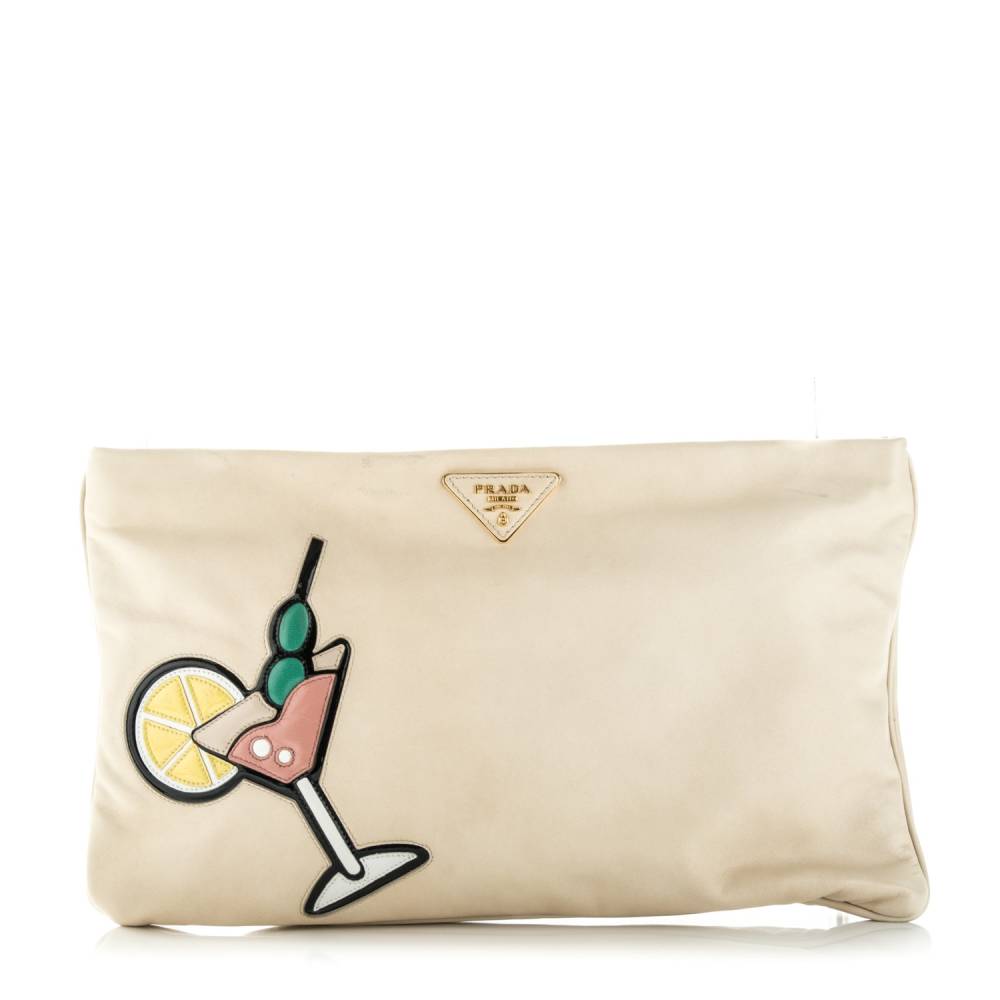
Prada
Martini Clutch
The central place of gathering for those wishing to indulge in alcohol is, of course, the bar. Bars must balance a space with appropriate areas for entertainment, groups, single visitors, and larger gatherings. The construction of bars ranges wildly from ultra-modern to old school glamour. One of the world’s most celebrated examples, The King Cole Bar at New York’s St. Regis hotel, is famed for its iconic Old King Cole mural and opulent interior, accented by large silver vases and a blue sky-painted ceiling. By contrast, Vienna’s Evening Star 'American Bar', designed by Austrian architect Adolf Loos, stands in noticeable distinction to its surroundings. Built in 1908 and reopened after a closing during the World Wars, the bar’s sleek mahogany accents, marble flooring, and coffered ceiling establish an elegant and classic speakeasy feel. Likewise, Zurich’s Kronenhalle bar, which opened in 1924 and was the canteen of choice for 20th century artists from Pablo Picasso and Marc Chagall, to Joan Miro and Henri Matisse, features a seductive, teak-paneled interior, marble-topped tables and custom lighting fixtures by Alberto and Diego Giacometti. While a more modern example, London’s Atrium Champagne Bar, designed by Fosters + Partners in 2013, uses both interior and exterior design to create a completely unique experience. With a 24-meter high skylight, the bar forms a modern minimalist cathedral. Finishing details include a triangular champagne bar, backlit metal paneling, and custom minimalist furniture.
However it came to be, the bar has become a central community space. It is largely a unifying factor throughout different cultures and different times. It is a place for friends to gather to discuss, to argue, to find love, and to celebrate, for the painter and poet and musician to solemnly contemplate their work, and for the rich history of alcohol—both good and bad—to live on.
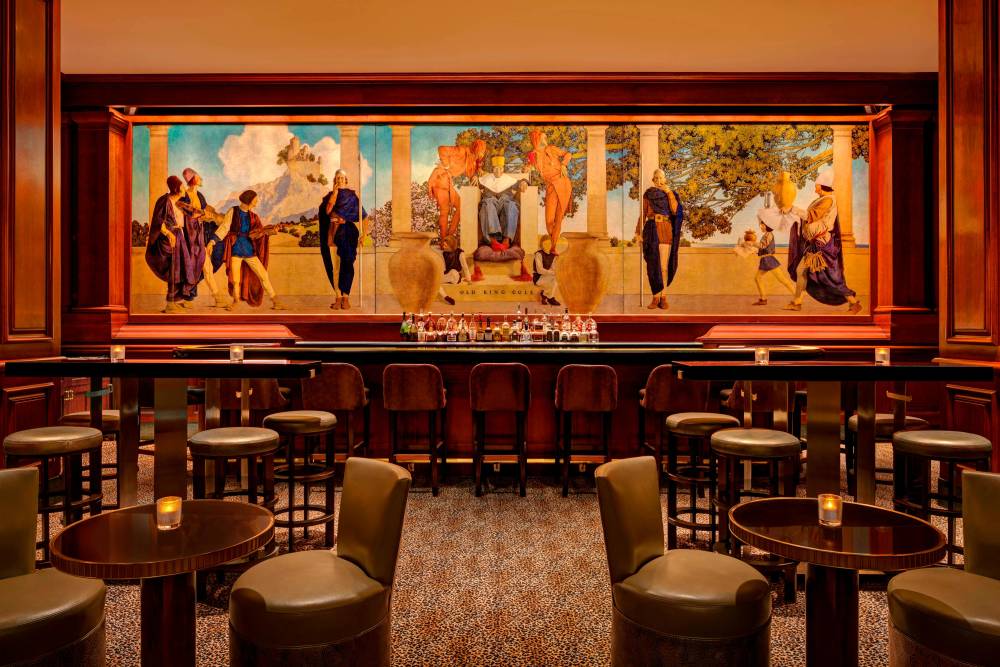
King Cole Bar
New York City
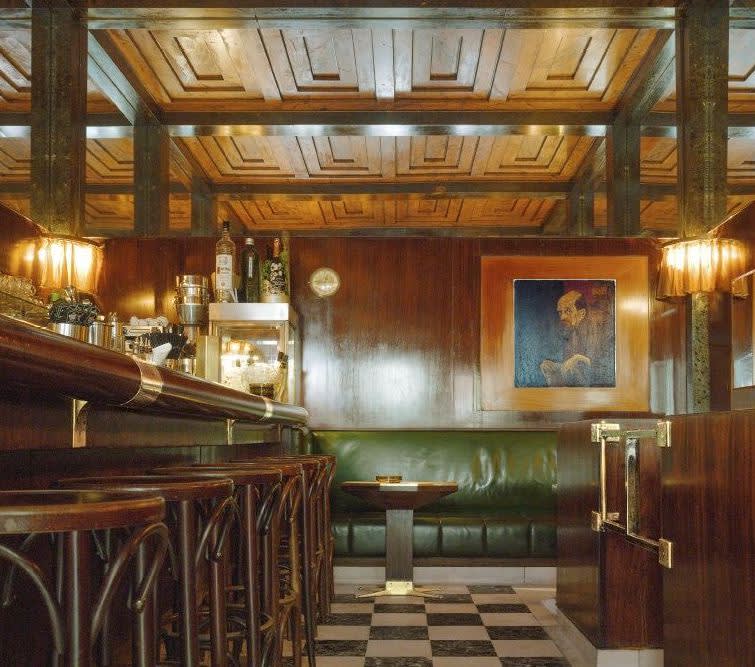
Adolf Loos
American Bar, Kärntner Strasse, Vienna, 1908

Adolf Loos
American Bar, Kärntner Strasse, Vienna, 1908
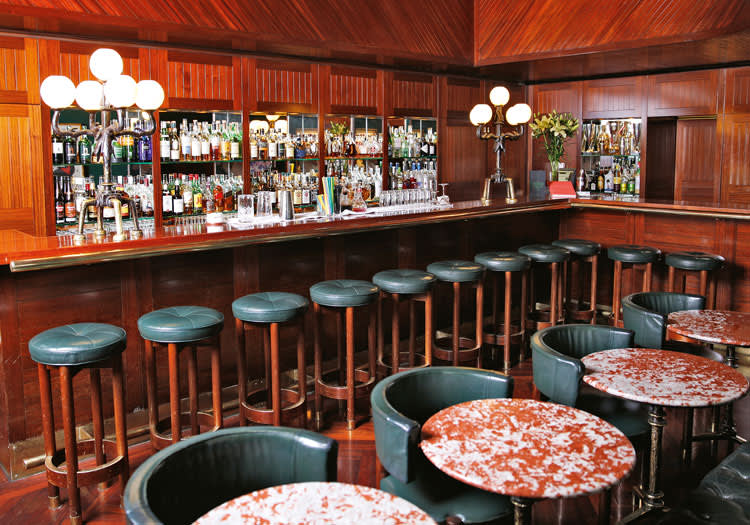
Kronenhalle Bar
Zurich, 1924
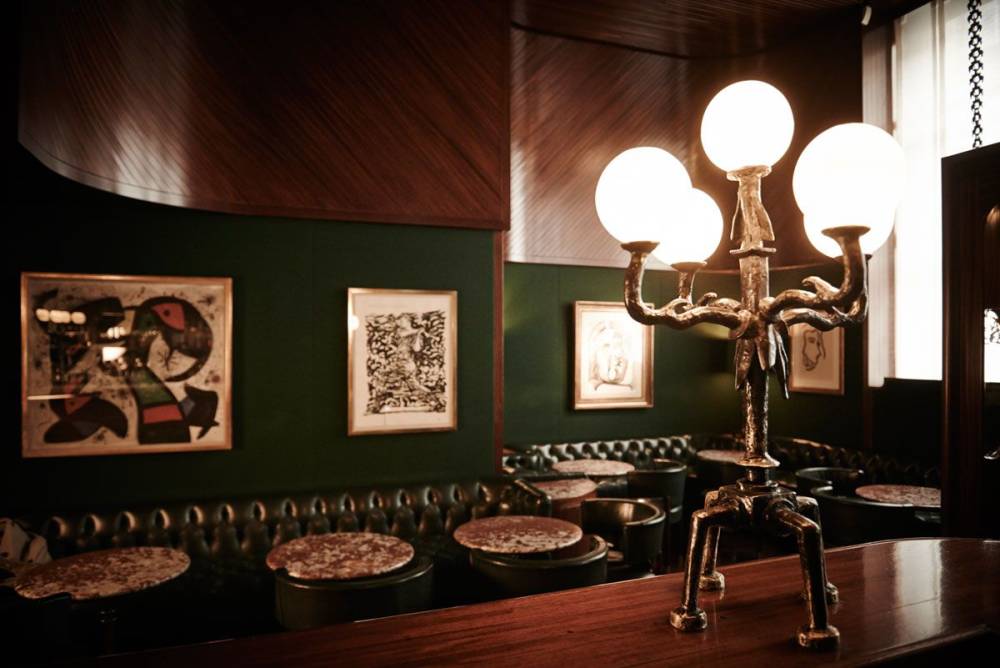
Kronenhalle Bar
Zurich, 1924
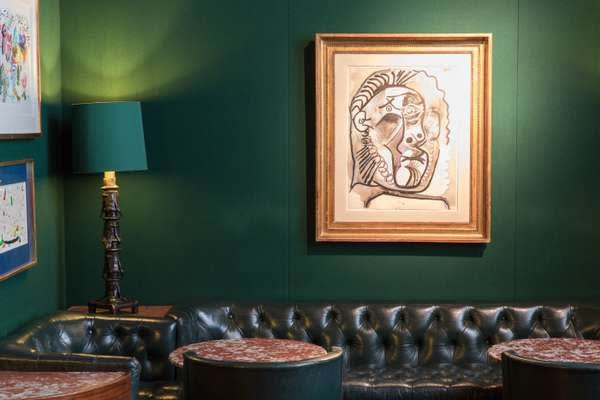
Kronenhalle Bar
Zurich, 1924
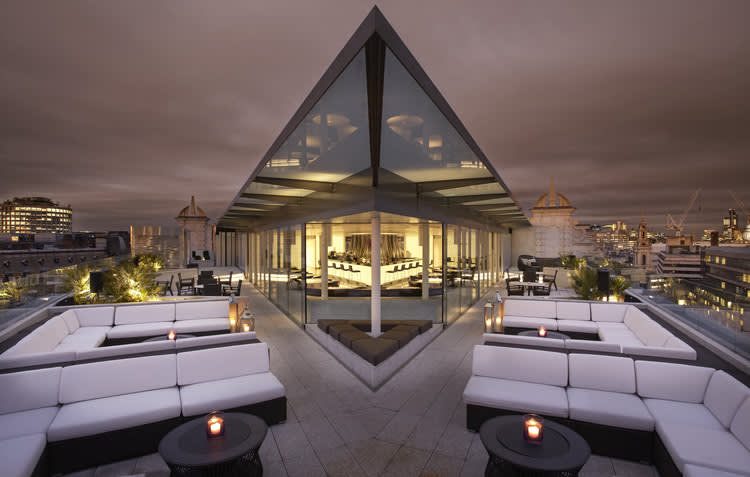
Foster & Partners
ME Hotel Atrium Champaign Bar, 2012
